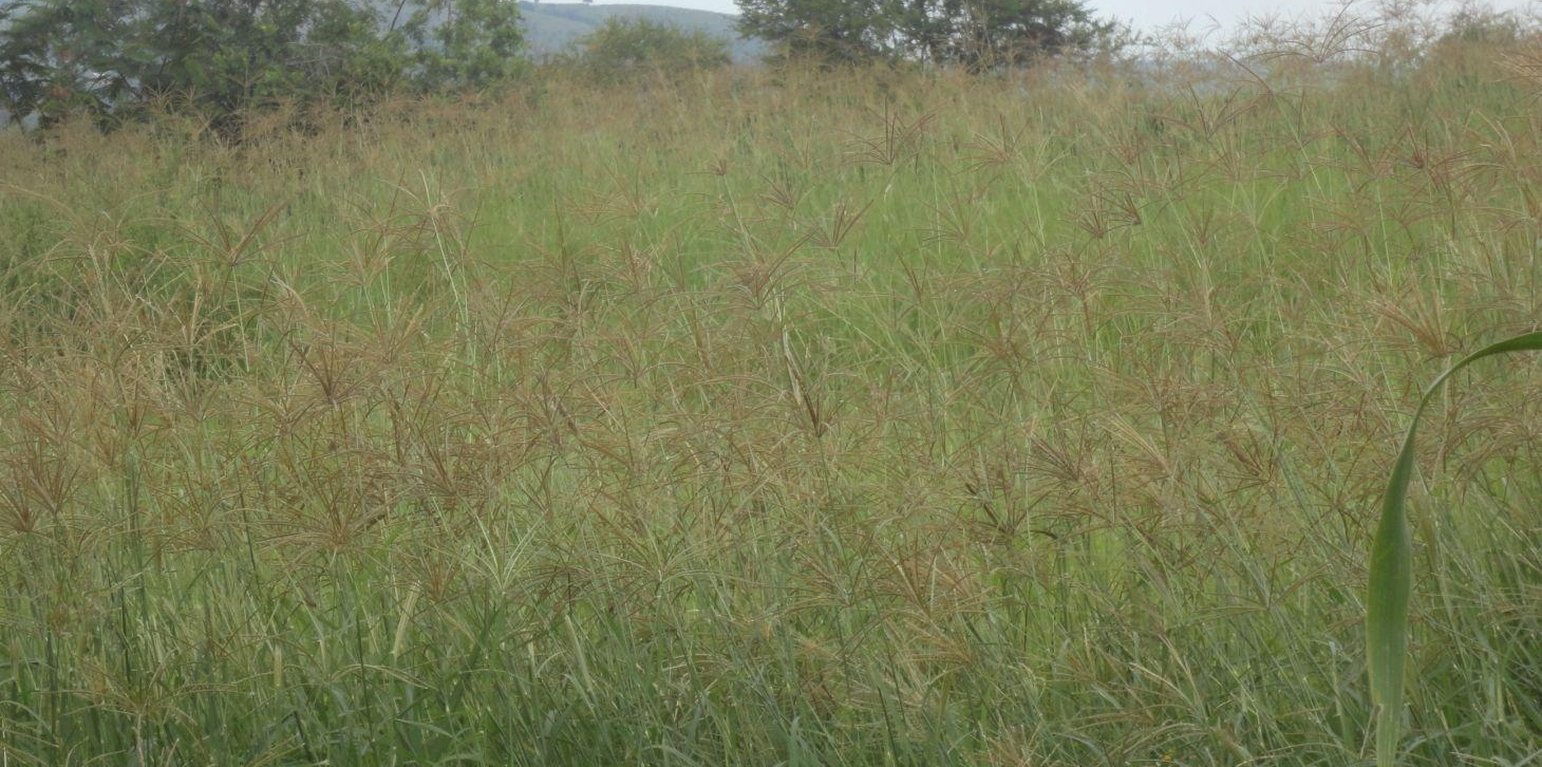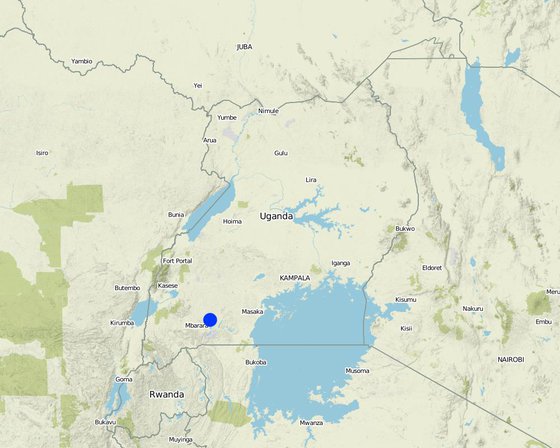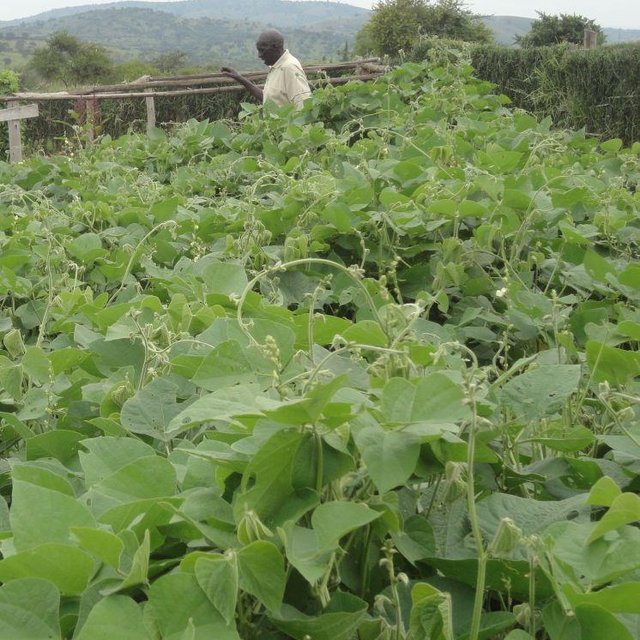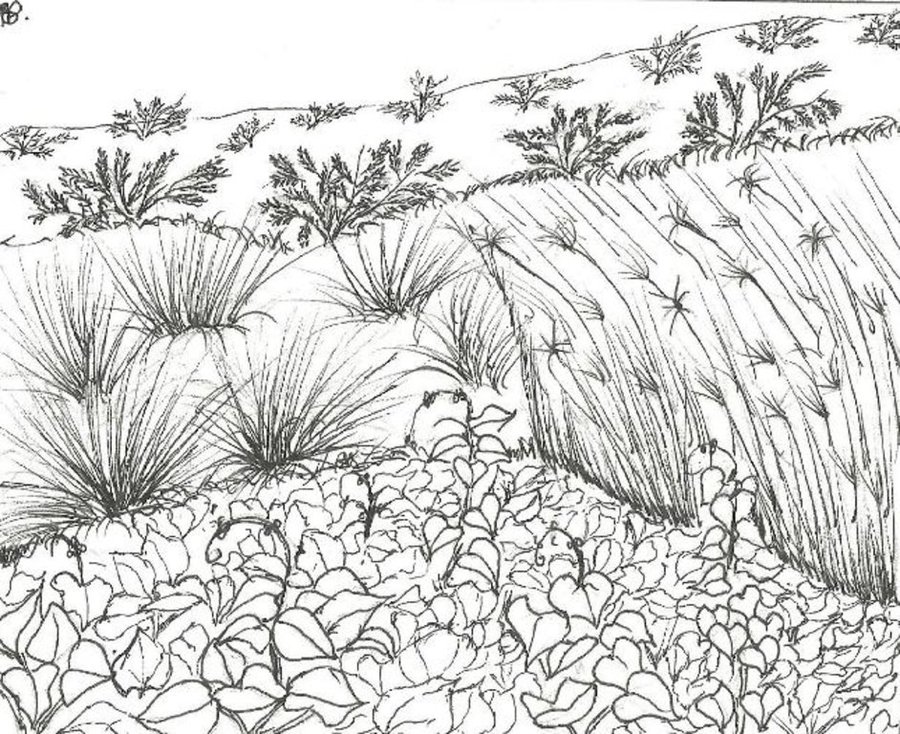



Grass and legumes are planted on degraded pasture land in fenced fodder plots within the drought prone cattle corridor of Kiruhura district. This climatic zone is characterized by short periods of intense rains followed by long dry spells. Previously, most of the pastoralists of Kiruhura led a nomadic lifestyle, moving their livestock over large areas in search of pasture and water. The combined effects of prolonged droughts and livestock movement over a defined corridor, led to increasing degradation of pastureland, reducing both the quantity and quality of pastures and worsening soil erosion. Therefore the pastoralists have settled down plant pastures instead. Grasses cultivated in the range lands of Kiruhura are Pennisetum purpureum (elephant grass), Stylosanthes guianensis (stylo), Chloris gayana. The legumes are Calliandra spp. and lablab.
Purpose of the Technology: The main objective of the technology is to improve the availability of quality forage and fodder for livestock during the dry season and to feed small ruminants. The other objective is to stop runoff which usually destroys crops, increase water infiltration during the rains and lessen the effect of floods. The benefits of fodder cropping include the protection of soil from erosion by increasing surface cover, improved soil fertility from the legumes, improved livestock production and consequently higher manure production.
Establishment / maintenance activities and inputs: Establishment involves digging, to loosen the soil and remove other grasses that would compete with the planted grasses. Digging is labor intensive and the land owner usually hires labor. The technology requires simple gardening tools such as the hand hoe for digging the soil, and a panga to clear invasive bushes, usually Lantana camara. In addition, irrigation may be necessary in the first 2 to 3 months even during the rainy season. Elephant grass is propagated vegetatively using cuttings planted in rows. Chloris gayana is propagated by broadcasting the seed. Lablab seeds are germinated by soaking in water and then planted directly in the prepared plot. Calliandra is first planted in nurseries before transplanting the seedlings.
Because of the erratic rains, irrigating the plots in the first few months of cultivation is critical.
Natural / human environment: The plots fenced off to protect the fodder crops.

Lugar: Kiruhura District (Sanga), Uganda, Uganda
No. de sitios de Tecnología analizados:
Difusión de la Tecnología:
¿En un área de protección permanente?:
Fecha de la implementación: hace menos de 10 años (recientemente)
Tipo de introducción








| Especifique insumo | Unidad | Cantidad | Costos por unidad (UGX) | Costos totales por insumo (UGX) | % de los costos cubiertos por los usuarios de las tierras |
| Mano de obra | |||||
| Labour | ha | 1,0 | 110,0 | 110,0 | 100,0 |
| Equipo | |||||
| Tools | ha | 1,0 | 8,0 | 8,0 | 100,0 |
| Material para plantas | |||||
| Seeds | ha | 1,0 | 25,0 | 25,0 | |
| Fertilizantes y biocidas | |||||
| Compost/manure | ha | 1,0 | 30,0 | 30,0 | 100,0 |
| Material de construcción | |||||
| Wood | ha | 1,0 | 200,0 | 200,0 | 50,0 |
| Fencing wire (roll) | ha | 1,0 | 40,0 | 40,0 | 100,0 |
| Costos totales para establecer la Tecnología | 413.0 | ||||
| Costos totales para establecer la Tecnología en USD | 0.17 | ||||
| Especifique insumo | Unidad | Cantidad | Costos por unidad (UGX) | Costos totales por insumo (UGX) | % de los costos cubiertos por los usuarios de las tierras |
| Mano de obra | |||||
| Labour | ha | 1,0 | 60,0 | 60,0 | 100,0 |
| Equipo | |||||
| Tools | ha | 1,0 | 8,0 | 8,0 | 100,0 |
| Material para plantas | |||||
| Seeds | ha | 1,0 | 25,0 | 25,0 | 100,0 |
| Fertilizantes y biocidas | |||||
| Compost/manure | ha | 1,0 | 30,0 | 30,0 | 100,0 |
| Material de construcción | |||||
| Wood | ha | 1,0 | 100,0 | 100,0 | 100,0 |
| Fencin wire | ha | 1,0 | 40,0 | 40,0 | 100,0 |
| Indique los costos totales para mantenecer la Tecnología | 263.0 | ||||
| Costos totales para mantener la Tecnología en USD | 0.11 | ||||
Cantidad antes de MST: 0 acre
Cantidad luego de MST: 6 acre
Implementation of the fodder cropping technology helps to maintain small and productive herds in a short distance from the households. As a result, milk production improved significantly, thereby improving household incomes.